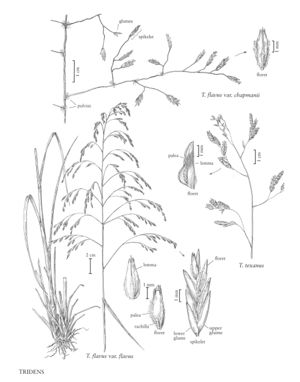Difference between revisions of "Tridens flavus var. chapmanii"
imported>Volume Importer |
imported>Volume Importer |
||
| Line 46: | Line 46: | ||
|publication year= | |publication year= | ||
|special status=Endemic | |special status=Endemic | ||
| − | |source xml=https:// | + | |source xml=https://bitbucket.org/aafc-mbb/fna-data-curation/src/2e0870ddd59836b60bcf96646a41e87ea5a5943a/coarse_grained_fna_xml/V25/V25_60.xml |
|subfamily=Poaceae subfam. Chloridoideae | |subfamily=Poaceae subfam. Chloridoideae | ||
|tribe=Poaceae tribe Cynodonteae | |tribe=Poaceae tribe Cynodonteae | ||
Revision as of 21:04, 5 November 2020
Panicles usually erect throughout; branches stiff; pulvini conspicuously hairy, hairs extending around the base of the branches.
Distribution
Va., N.J., Miss., Tex., La., Mo., Ala., Del., Okla., Tenn., N.C., S.C., Ark., Ga., Fla.
Discussion
Tridens flavus var. chapmanii grows in pine and oak woods of the southeastern United States from Missouri to Virginia and south from easter Texas to Florida.
Selected References
None.
Lower Taxa
None.
